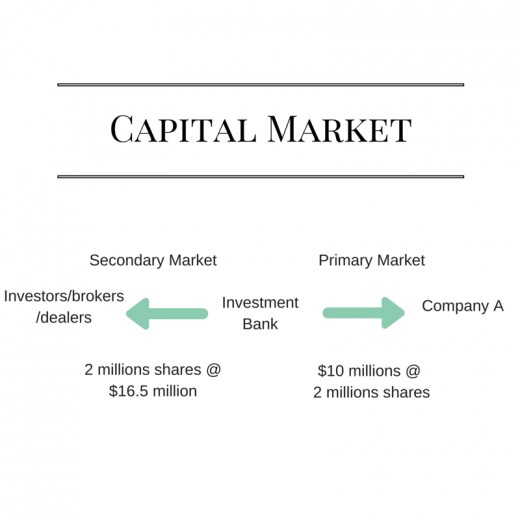Stock Market and Primary market

What is a stock market?
Imagine you have a great service or product to offer and you decide to start up your own business. However, you don’t have enough capital to expand and work with. Many great ideas that possibly had the potential to revolutionise the world have been buried due to the lack of funding. The model of joint stock companies and the stock market has helped countless businessmen establish their empires. The very first stock was created in 1602 by the Dutch East India Co. who officially issued the first share as the exchangeable medium for the shareholders to trade.
As the volume of shares increased over time, it is necessary to have an organised marketplace to exchange these shares. The stock market which is also known as the share market or the equity market was created to facilitate the transactions of stocks. There are many stock exchanges worldwide, one of the most famous markets is the New York Stock Exchange in Wall Street, which started in 1792. The Stock exchange is a place where the shares of public listed companies are freely bought and sold. When a company needs to raise capital, the company issues securities like stocks and bonds. Everyone can buy shares but only stockbrokers can do the trading. Stockbrokers are licensed members who buy and sell securities at the stock exchange on behalf of their clients.
The key advantage of issuing shares is that the company does not need to return the capital amount or make interest payments to the investors. To put it even simpler, this means if you own a share, you own part of the company. You will get a cut of the profit if the company makes profit. On the contrary, if the company is not doing well you will not get the money back. If you buy a bond issued by the company, you become one of the lenders of the company; you will receive interest from the money you have lent and even if the company is not doing well, you will still get your money back with interest.
We will look at an overview of how shares are issued and traded. There are two types of stock markets: primary markets and secondary markets. Knowing how the primary and secondary markets work is the key to understanding how stocks are traded. Without primary and secondary markets, the stock market would be much harder to navigate and much less profitable.
Primary market
A Primary market is where newly issued securities are being sold to the public. It is also known as new issue market (NIM). Initial public offering (IPO) is the same, where a private company issues securities to the public for the first time.
Initial public offering (IPO)
Companies can be categorised into private company and public company. A private company is owned by a few shareholders while a public company can be more than thousands. A few examples of public companies are Microsoft, Apple, Google etc. A public company is also known as a listed company.
A private company can raise funds by selling its company shares to expand the capital. This process is also known as going public. Depending on the company’s needs, different options such as public investment, private investments or debt can be used. This is done by an underwriting process where an investment banker is engaged to raise investment capital from the prospective investors on behalf of the company. The investment banker is also known as an underwriter.
There is a risk for the individual investor who invests in IPO as it can be difficult to forecast the company’s performance. As IPOs are usually issued by small companies looking for capital, there is not many historical data of the company for research purposes. Despite the underlying value of the stock, the underwriter’s goal is to sell the stock to the prospective investors. Therefore, it’s imperative to understand the process and its associated risk before taking the chance!
How does it work?
Let’s look at an example. Say company A needs $10 million to buy a factory and machinery to expand his production. The owner then engages an investment banker to raise the funds needed. After evaluating company A, the investment banker approves the application to raise a capital of $10 million with 2 million shares. Then, the investment bank, together with other associated firms issue company A $10 million cash with 2 million shares signed to them.
The investment bank then sells the 2 million shares to brokers, dealers or any investors in the secondary market. Company A stocks will start being bought and sold between the traders. Depending on the performance of the shares, the investment banker does not sell 2 million shares at once. Instead, they will break it down into portions and sell them as the stock price rises.
For example, on the first week 500k shares are sold at $4 per share.
On the second week, other 500k shares are sold at $6 per share.
On the third week, 500k shares are sold at $9 and
in the last week, 500k shares sold at $14 per share.
With that, Company A receives $10 million in the primary market while the investment bank makes $16.5 million in the secondary market.

The picture above shows the process of the investing bank buying 2 million share with $10 million dollars and with the same 2 millions shares, $16.5 million is raised from the secondary market.This is an overview of how the primary and secondary market function together. In the next article we will look at the secondary market and explore the different categories in the secondary market.






